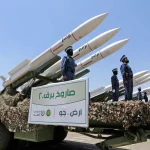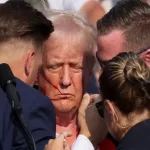EU Council’s statements says that as part of the 12th sanctions package against Russia approved on December 18 after lengthy negotiations, the import of Russian diamonds will be banned starting January 1, 2024. The ban will apply to both diamonds of Russian origin and gemstones transiting through Russia.
Russia mainly exports rough diamonds with other countries processing them. In 2022, Russia produced more diamonds than any other country: 41.9 mln carats which is up 7% year on year. This yielded a record 35% of the world market estimated as 120 mln carats. These are estimates based on data sourced from the Kimberley Process Consortium (KPCS), an international organization for coordinating diamond producing countries.
By the way, one carat equals 0.2 g. The heap of diamonds produced during the year weighed as much as 8.38 tonnes! It’s not just rings and earrings that emerge from such ‘heaps’. Natural diamonds are essentially an element used in state-of-the-art optical and electronic products, tools, lubricants, etc. to name a few.
Despite the fact that Russia is the world’s largest producer of rough diamonds, Antwerp (Belgium), which has long been considered the diamond capital of the world, is the main buyer in the world accounting for about 80% of total purchases. That is why Belgium filibustered the imposition of such a ban for a very long time.
As of year-end 2022 (no more recent data are available), UAE ($1.64 bn), Belgium ($1.46 bn) and India ($1.08 bn) were the main buyers of diamonds originating from Russia. They are followed in terms of export volumes, although with a big lag, by Armenia ($178 mln), Israel (104 mln) and Botswana (49 mln).
 It is, however, unclear how the European Union intends to implement its requirements. According to Al Coo, the CEO of De Beers, the world’s largest UK diamond mining company (founded back in 1888 in what is now South Africa, a member of Anglo American group engaged in mining), the tracking system used to monitor diamonds produced in Russia is very vague and it is almost impossible to distinguish a Russian diamond from any other. For instance, in his interview to Financial Times, he said: “By no stretch of the imagination, can a customs officer look at two diamonds and say with confidence: “This one is definitely Russian.”
It is, however, unclear how the European Union intends to implement its requirements. According to Al Coo, the CEO of De Beers, the world’s largest UK diamond mining company (founded back in 1888 in what is now South Africa, a member of Anglo American group engaged in mining), the tracking system used to monitor diamonds produced in Russia is very vague and it is almost impossible to distinguish a Russian diamond from any other. For instance, in his interview to Financial Times, he said: “By no stretch of the imagination, can a customs officer look at two diamonds and say with confidence: “This one is definitely Russian.”
The intrigue with the adoption of the EU’s 12th sanctions package lasted for more than a month. The European Commission prepared it for approval as early as on November 15. Reuters then reported that the European Commission had proposed banning the import of diamonds and a number of metals from Russia, the transit through Russia of goods and technologies that could boost the country’s industrial potential and lowering the price ceiling for Russian oil. `However, the Commission’s permanent representatives were unable to agree on the package by the EU summit scheduled for December 14–15. At the last moment, Austria opposed the sanctions package and threatened to veto it if Ukraine did not remove the Austrian Raiffeisenbank from its list of the sponsors of the ‘special operation’. On December 16, Reuters reported that Austria had withdrawn its objections after Ukraine agreed to temporarily remove the bank from the ‘blacklist’.
On December 18, the next sanctions package was officially confirmed by the European Commission and its text was published in the EU’s gazette. As early as in the beginning of December, without waiting for the Europeans, a similar ban was announced by the G7 (Great Seven includes the UK, Germany, Italy, Canada, France, Japan and the USA). G7 and EU sanctions have now been coordinated in terms of timing. A ban on the import of diamonds from Russia will take effect from January 1, 2024. The ban on the import of Russian diamonds (diamonds of Russian origin that have been cut and polished in third countries) will be gradually introduced from March 1 to September 1, 2024. By that time, an effective mechanism for tracking the origin of gemstones must also be put in place.
According to Bloomberg, today, the G7 continues consultations with diamond producing countries on the development and implementation of such system. At the very least, according to Belgian Prime Minister Alexander De Croo, “this is an important step to significantly reduce the cashflow diamond trades in Russia.”
However, more than 90% of diamond cutting operations occur in India, which is not a member of the G7 and whose cutting industry is not very interested in the implementation of such step due to the additional costs. The country’s diamond industry based mainly in the western state of Gujarat employs millions of people working in small and medium-sized firms. India mainly processes small-size Russian diamonds. However, even there the proposed ban would impact the diamond supply chain, according to industry experts.
It is possible that businesses facing sanctions pressure will redirect the flow of raw materials to other, more friendly locations. It is difficult to disconnect Russia from the global trade in rough diamonds since its share in output and its reserves are too large while demand for diamonds is increasingly growing in China, India and other Asian countries, according to Forbes analysts, who are also skeptical about the implementation of a mechanism for tracking the origin of those “tripping stones”.
Therefore, the main goal of the EU is to reduce the export revenues of the Russian budget through a ban on diamond imports. However, “Russia has options for circumventing diamond sanctions and it will implement them”, the country’s presidential spokesman, Dmitry Peskov, said. “Russia will redirect sales markets”, Finance Minister Anton Siluanov noted, in his turn, adding that those sanctions would not benefit those who imposed them. Given the fact that Russia is a major diamond producer, in the near term this import ban will cause a shortage in the market and, as a result, prices will grow. Thus, Europeans will have to buy more expensive jewelry and watches with diamonds themselves.
Experts do not rule out that Europeans will generally turn a blind eye to the origin of gemstones since the EU authorities risk actually destroying their own jewelry industry that generates good earnings.
In general, this whole ‘diamond story’ can stimulate Russia to transform the global diamond industry and develop its own standards in this area together with non-Western countries. All the more so as India has already called on the G7 countries to postpone the ban on Russian diamonds due to unclear rules for tracking the origin of the gemstones.














Comments